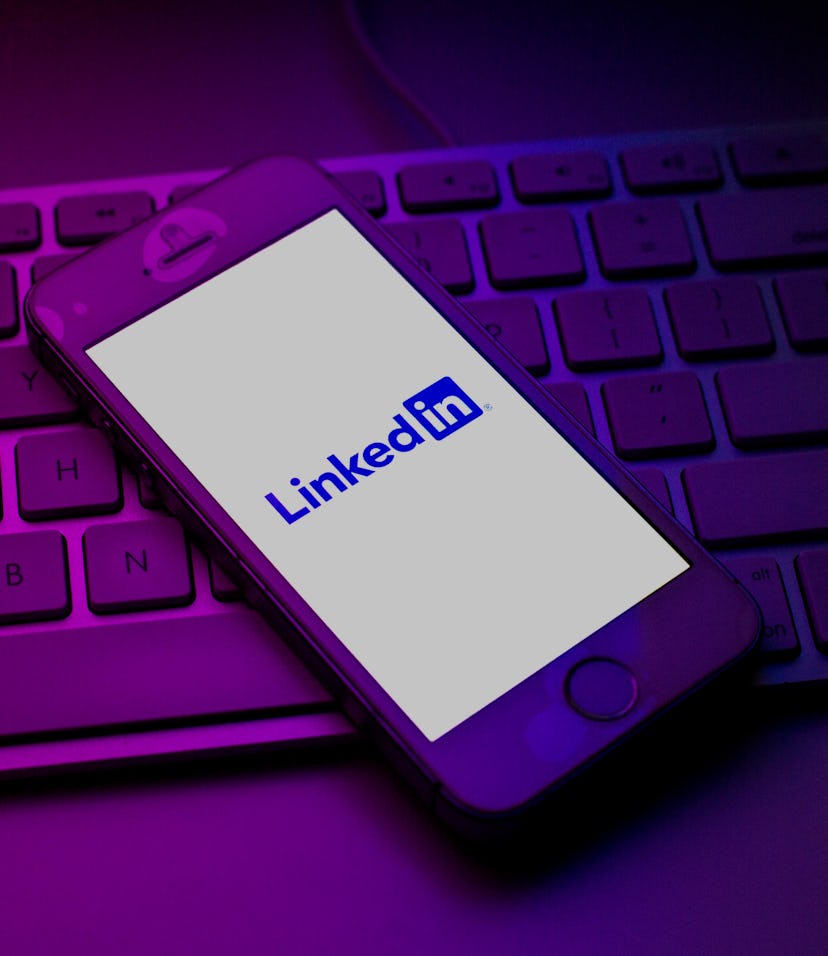Linkedinfluencers
LinkedIn is testing a new ‘no politics’ setting
When is there gonna be a “no broetry” button?

LinkedIn has been connecting business professionals for eighteen years, and at this point it’s become a cesspool of indecipherable business jargon, faux-gurus, and humblebrags. Its endless scroll of hustle culture has ushered in the nauseating rise of broetry — cheesy motivational stories told line by line in single sentences — and the odd, stilted style has inspired parodies across Twitter and Reddit.
Another notorious aspect of LinkedIn is its relentless emails to your contacts, like asking some former classmate with whom you did a group project five years ago to “connect” (thanks to a 2015 lawsuit, LinkedIn can’t spam your email contacts quite as relentlessly as before).
But despite the prevailing insincerity, cheesy suck-ups, and relentless obsession with working (stop trying to make “work anniversary” happen), LinkedIn is testing some exciting features, including a “no politics” setting. Kind of like working at Coinbase.
If you’re part of the test group, you can go to Settings>Account preferences>Feed preferences and turn off political content in your newsfeed. You’ll see the setting if you’re part of the initial test.
Even without the politics, your LinkedIn newsfeed may still feel like an empty calorie: anodyne interview tips, pretentious announcements from people you don’t know, and mind-numbing emoji polls. But hey, at least one social media feed will be free of endless political debate.
LinkedIn’s empire — LinkedIn boasts 810 million members and has embedded itself into the corporate world. It has also invested in an influencer program, introduced video profiles, and tested live audio events akin to Twitter Spaces. More than just a host of online resumes, it’s a bona fide social network: it has pledged $25 million for its Creator Accelerator Program, tried out “stories” feature (RIP), and runs an education program called LinkedIn Learning. The network’s annual revenue is $10 billion— twice the revenue of networks like Snap and Twitter and several times that of Pinterest— and LinkedIn rakes in this cash, in large part, by selling user data to recruiters and employers who are hiring. Other streams of revenue include paid ads in the newsfeed and premium subscriptions for better search and messaging.
It might be cringey, but the business-focused social network (which predates Facebook) has become the de-facto tool for networking as work becomes more temporary, sporadic, and informal. The mid-century American dream involved labor unions and corporations, pensions, and security. But as the nature of work changes, the key to success is not your employer but your network— even the “connections” whom you’ve never met, whose profiles are no more than an algorithmic suggestion.
“We’re seeing a lot of Gen Z join the network right now,” Mr. Roslansky told Joanna Stern of The Wall Street Journal. He shared that job moves are up nearly 70 percent for users ages 16 to 22, compared to just 7 percent for users over 55.
“We’re seeing the platform evolve much more to cater to them,” Rolansky said.
The site was founded in 2003 by Reid Hoffman, a fixture of the so-called PayPal mafia (Hoffman’s interest in facilitating business connections may have started during his time at the payment company where his position required him to “negotiate with the outside world”). Since 2016, LinkedIn has been a wholly-owned subsidiary of Microsoft.